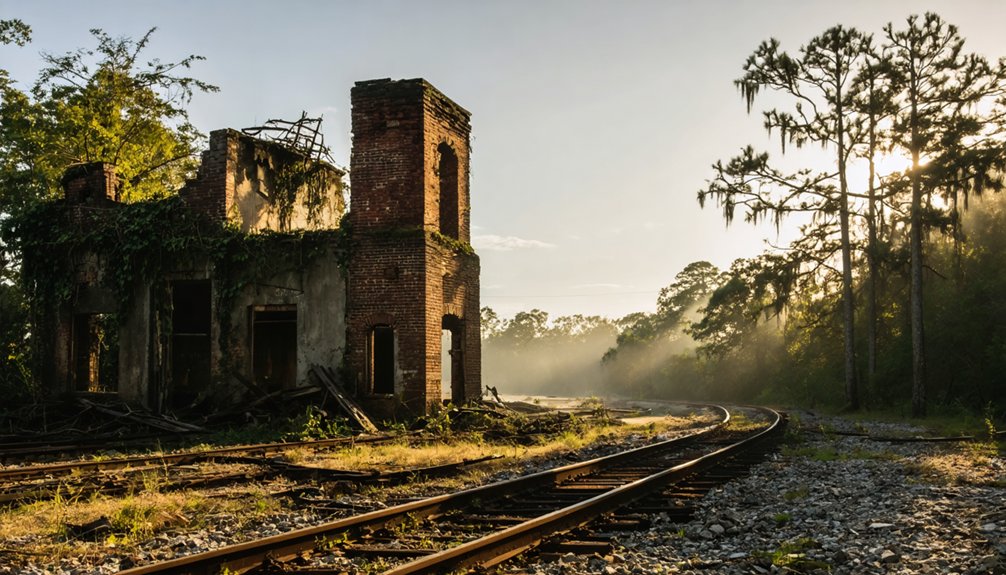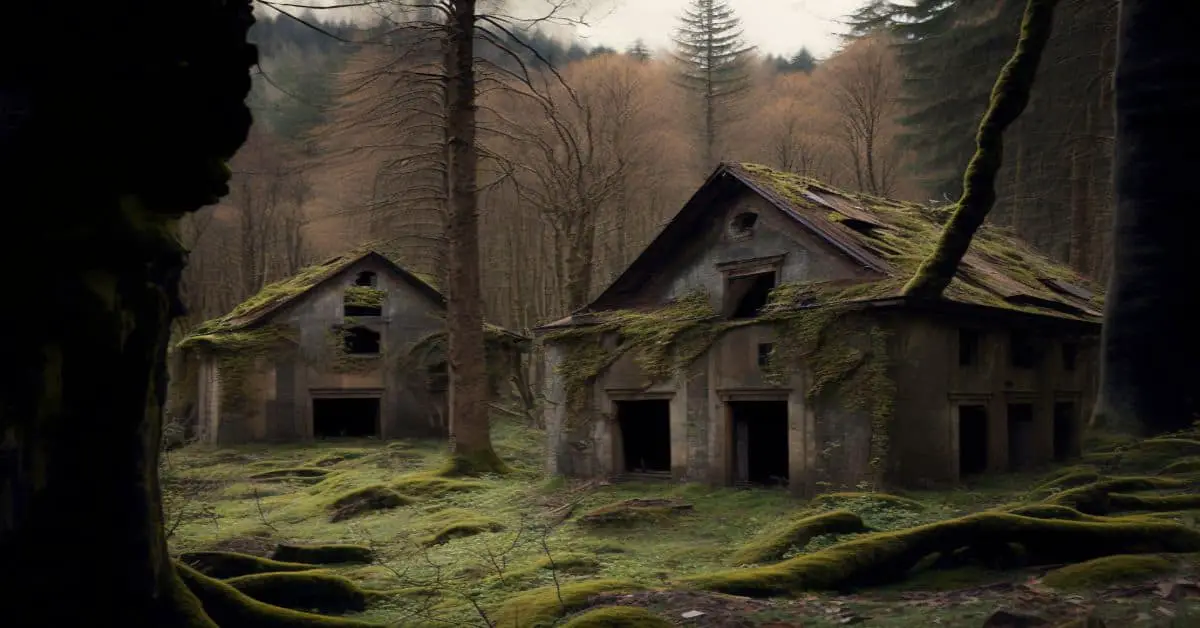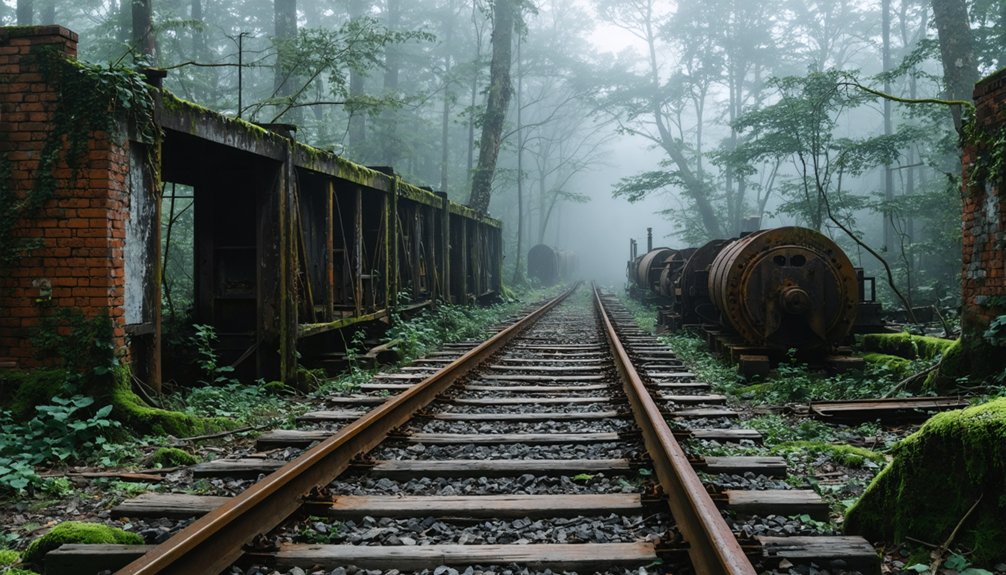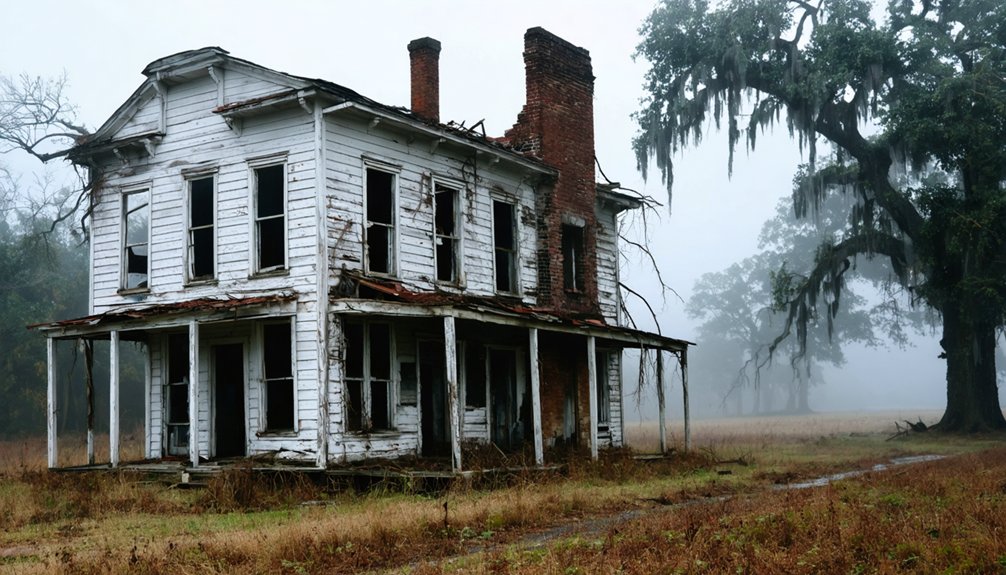You’ll discover Campbellton, Georgia as a ghost town along the Chattahoochee River, where ruins whisper tales of its 1836 founding and former glory as Campbell County’s seat. Once a bustling riverside trading hub with 500 residents, the town declined dramatically by 1930 to fewer than 100 people due to bypassed railroad routes and agricultural crises. Today, crumbling foundations, archaeological artifacts, and local legends reveal the fascinating story of this abandoned settlement’s rise and fall.
Key Takeaways
- Campbellton was once a thriving riverside trading hub and county seat of Campbell County, established in 1828 along the Chattahoochee River.
- The town’s economy centered around cotton, tobacco, and livestock trade, with warehouses and wharves supporting regional commerce.
- Population declined from 500 to fewer than 100 residents by 1930 due to bypassed railroad routes and agricultural crises.
- Archaeological remains include courthouse foundation ruins, while recovered artifacts and aerial photography reveal the town’s original layout.
- Today, Campbellton exists as a ghost town with historical markers, attracting tourists interested in its history and paranormal activity.
The Birth of a Riverside Trading Hub
While the Indian Removal Act of the 1830s opened new territories for settlement, Campbellton emerged as a strategic trading post on the banks of the Chattooga River.
You’ll find its location perfectly positioned near the Georgia-Alabama border, where indigenous trade routes once flourished. The town’s early infrastructure centered around river transport, with docks and warehouses supporting the flow of cotton, timber, and agricultural goods.
As you explore Campbellton’s origins, you’ll discover how its trade networks expanded through primitive but functional roads connecting to neighboring settlements.
The town’s growth accelerated when merchants and laborers established businesses around the waterfront, while postal services and basic communication lines kept commerce flowing.
The Chattooga’s waters proved ideal for small steamboats and flatboats, cementing Campbellton’s role in regional commerce.
Rise to County Seat Glory
After Campbell County’s establishment in 1828, you’ll find Campbellton’s rise to prominence began with its designation as the county seat, cementing its status as the region’s administrative hub.
You can trace the town’s expanding influence through the construction of essential government buildings, including a courthouse and jail, which served as symbols of the settlement’s political authority.
Your historical records would show how Campbellton’s strategic location along the Chattahoochee River enhanced its position as both a seat of power and a crucial trading center, where river commerce merged with local governance.
Early Political Power
Since its founding in 1836, Campbellton rapidly emerged as a political powerhouse within the region, strategically positioned along the Columbus-Campbellton-Chattahoochee River trade route. The town’s wealthy planters and merchants forged powerful political alliances through land ownership, marriage ties, and patronage networks.
When Campbell County was established in 1837, you’d find Campbellton’s courthouse bustling with activity as the new county seat. The social hierarchy was clearly defined, with elite leaders often wearing multiple hats as judges, legislators, and militia officers.
They’d gather at the courthouse for heated political debates and rallies, while making decisions that shaped the region’s future. The courthouse became the nucleus for legal proceedings, property disputes, and official county business, cementing Campbellton’s grip on local power throughout the antebellum period.
River Trade Prominence
The Chattahoochee River powered Campbellton’s meteoric rise from a frontier settlement to a bustling trade center.
You’d find the town’s strategic location perfect for river navigation, connecting local farmers and merchants directly to Gulf ports via the Apalachicola River system. The trade dynamics transformed Campbellton into a crucial commercial hub, where cotton and corn flowed south while manufactured goods moved inland.
You could’ve witnessed a thriving waterfront lined with warehouses and wharves, where flatboats and steamboats loaded precious cargo. The river trade attracted craftsmen, merchants, and banking services, cementing Campbellton’s regional importance.
This economic vitality earned the town its county seat status in 1828, bringing courts, officials, and additional prosperity to the bustling river port.
Government Buildings Emerge
Rising from its foundations in 1828, Campbellton’s first courthouse marked the town’s ascension to county seat status, launching an era of civic expansion that would transform the riverside settlement.
The Greek Revival courthouse architecture became your central hub for government functions, where you’d find:
- Legal proceedings and court sessions shaping local justice
- Tax collections and land deed registrations for property owners
- Public records safely stored in the clerk’s vault
- Political rallies fostering civic engagement
- County meetings directing regional policies
You’d see the courthouse complex grow as timber buildings gave way to more durable brick structures.
The adjacent public square buzzed with community gatherings, while the jail and sheriff’s office maintained order.
This governmental nucleus drew legal professionals and officials, strengthening Campbellton’s role as Campbell County’s administrative heart until 1871.
Life in 19th Century Campbellton
As you’d walk through 19th-century Campbellton, you’d encounter a bustling agricultural marketplace where farmers traded cotton, tobacco, and livestock along the Chattahoochee River trade routes.
The town’s social fabric centered around local stores and markets, where residents gathered not just for commerce but for essential community interaction.
Your daily life would’ve revolved around community events and religious gatherings at local churches, which served as both spiritual centers and social hubs for the rural population.
Daily Commerce Activities
Life in nineteenth-century Campbellton revolved around a bustling agricultural economy, where cotton production dominated the landscape and shaped daily commerce.
You’d find bartering practices were common due to cash scarcity, with seasonal trades dictating much of the economic activity. Local merchants and trading posts served as essential hubs where you could exchange goods and services.
The town’s commerce centered around these important activities:
- General stores offering daily necessities and staples
- Blacksmiths providing crucial equipment repairs and metalwork
- Skilled craftsmen like carpenters and wheelwrights serving the community
- Inns and taverns catering to travelers passing through
- Small-scale textile manufacturing supplementing agricultural income
Despite challenges like poor infrastructure and economic depressions, Campbellton’s residents maintained a self-reliant commercial system through their diverse trading network.
Community Social Gatherings
While commerce drove Campbellton’s daily activities, the town’s social fabric was woven through vibrant community gatherings that brought residents together throughout the year.
You’d find yourself attending lively church gatherings where sermons and hymns merged with community decision-making and social support.
During warmer months, community picnics and harvest festivals dotted the calendar, while barn raisings and quilting bees combined necessary work with socializing.
Weekly dances and musical sessions, often featuring homemade instruments, provided entertainment and strengthened neighborhood bonds.
The church served as your primary social hub, hosting Sunday schools, youth groups, and fundraising dinners.
When weather permitted, you’d join families for outdoor activities like fishing and hunting, while evening gatherings centered around storytelling and folk games.
Economic Forces Shaping the Town
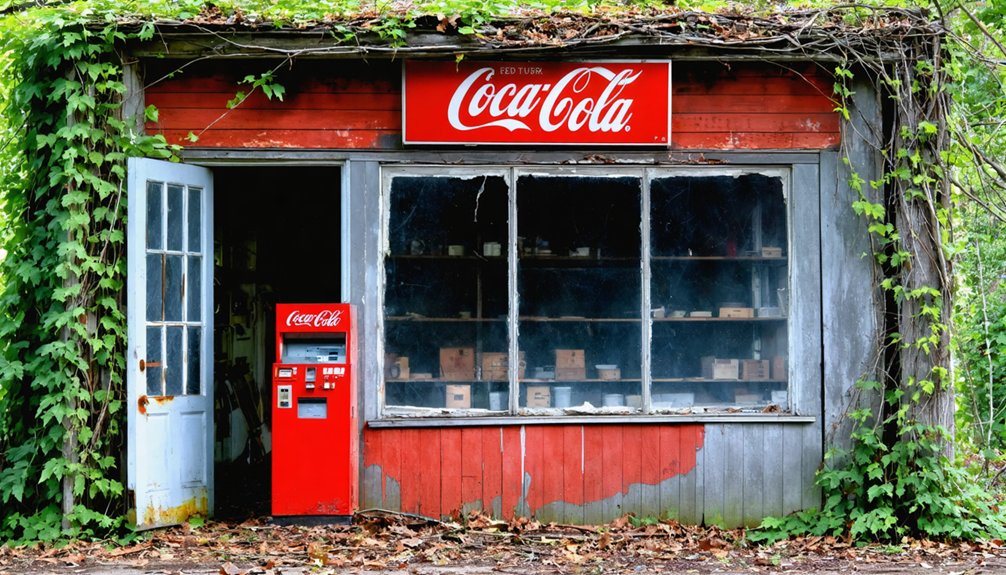
Despite its rural location, Campbellton’s economic landscape was shaped by a complex interplay of agricultural dominance and small business activity. The town’s limited economic diversification and agricultural challenges created a delicate balance between survival and stagnation.
You’d have found a community wrestling with the demands of cotton farming while trying to maintain essential local services.
Key factors affecting Campbellton’s economy included:
- Cotton farming dominated local agriculture, creating seasonal income fluctuations
- Small businesses struggled against limited market access and investment opportunities
- National economic trends and global competition pressured local farmers
- Infrastructure gaps, particularly in transportation, hindered growth potential
- Environmental challenges like droughts and floods impacted crop yields
These economic forces ultimately tested the town’s resilience, pushing residents to adapt or seek opportunities elsewhere.
The Great Decline and Abandonment
As Campbellton entered the 1920s, a perfect storm of economic, demographic, and infrastructural challenges converged to accelerate the town’s decline.
You’d have witnessed a dramatic population decline from 500 residents to fewer than 100 by 1930, as younger generations sought opportunities in larger cities. The transportation impact was severe – bypassed railroad routes and declining stagecoach lines left the town increasingly isolated.
The situation worsened when agricultural crises struck. Cotton yields plummeted 40% from soil depletion, while the boll weevil devastated remaining crops.
The Great Depression delivered the final blow, triggering bank failures and property devaluation. By the mid-1930s, you’d have seen the closure of essential institutions – the school, post office, and general store – effectively sealing Campbellton’s fate as a ghost town.
Archaeological Remnants and Lost History
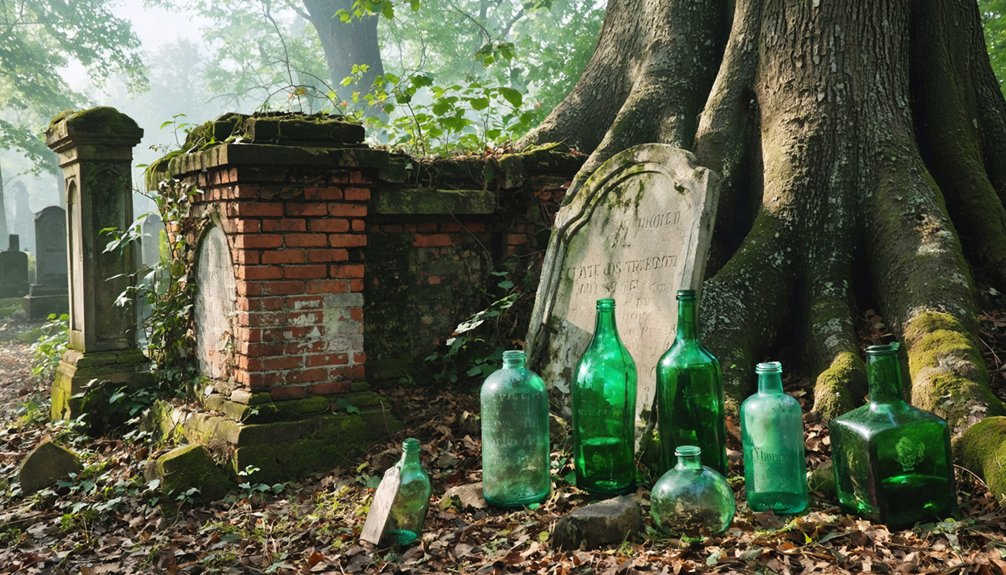
The archaeological remnants of Campbellton tell a complex story of the town’s rise and disappearance, preserved beneath decades of natural reclamation.
When you explore the site today, you’ll find a historical context that reveals the town’s significance through carefully documented excavations and surface surveys.
- Foundation ruins of the central courthouse mark what was once the heart of local governance
- Recovered artifacts like ceramics, glass, and metal tools paint a picture of daily 19th-century life
- Grid-pattern streets and property boundaries remain visible through aerial photography
- Archaeological surveys have unearthed personal items showing diverse socioeconomic levels
- Stratigraphy layers document the evolution from thriving town to abandoned settlement
While limited formal excavations have occurred, the site’s archaeological significance continues to provide insights into this once-bustling county seat’s transformation into a ghost town.
Modern-Day Legacy and Local Legends
Today’s Campbellton exists primarily through preservation efforts, folklore, and a growing interest in paranormal tourism. You’ll find informational plaques marking key landmarks, while local historical societies work to document and preserve the remaining structures.
The site’s ghostly encounters have become legendary, with visitors reporting unexplained lights, sounds, and apparitions at dusk. Local folklore weaves historical facts with supernatural elements, attracting paranormal investigators and tourism enthusiasts.
Strange lights dance at twilight while phantom whispers echo through Campbellton’s ruins, drawing ghost hunters and curious tourists alike.
You’ll discover Campbellton’s influence extending beyond its boundaries, inspiring art, music, and storytelling in nearby communities. Regional festivals and educational programs frequently showcase the ghost town’s heritage, while documentaries, podcasts, and social media keep its mysteries alive.
Though commercial activity remains modest, small businesses benefit from guided tours and ghost town merchandise, creating a sustainable micro-economy around this fascinating historical site.
Frequently Asked Questions
Are There Any Surviving Photographs of Campbellton During Its Peak Years?
With less than 100 historical photographs surviving, you’ll find rare archival images showing Campbellton’s commercial district and railroad stations in Georgia’s historical societies, museums, and university special collections.
What Happened to the Cemetery and Burial Grounds of Original Residents?
You’ll find the original cemetery still exists but remains largely abandoned. Without proper burial ground preservation efforts, many graves have deteriorated over time, though local historical societies occasionally attempt cleanup projects.
Did Any Notable Civil War Battles or Skirmishes Occur in Campbellton?
You won’t find any significant Civil War battles or skirmishes in Campbellton’s historical record. The town’s small size and lack of strategic importance kept it largely removed from direct military engagements.
Were There Any Documented Native American Settlements Before Campbellton’s Founding?
You’ll find evidence of Creek Native American settlements through historic artifacts in the region, though no major permanent villages were documented at the exact Campbellton site before its founding.
What Natural Disasters or Epidemics Affected the Town’s Population?
Powerful periodic flooding damaged your town’s infrastructure in the 1850s, while disease outbreaks, particularly cholera and typhoid fever, swept through in the 1860s, decimating the local population.
